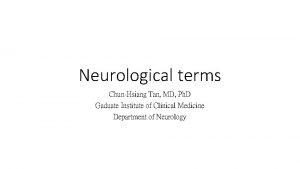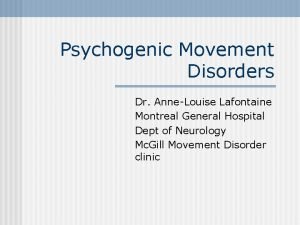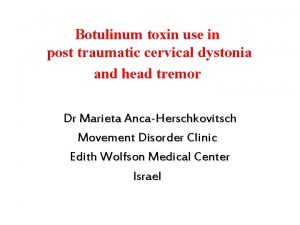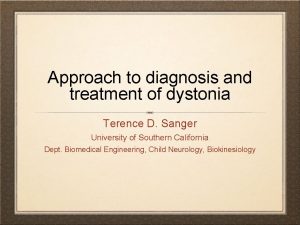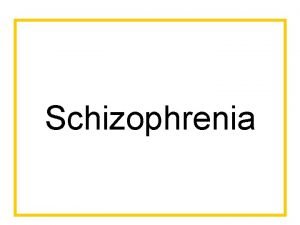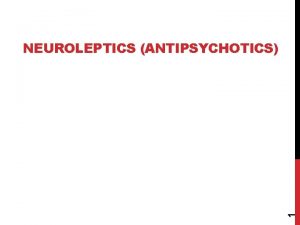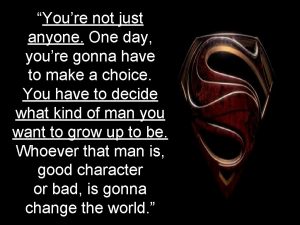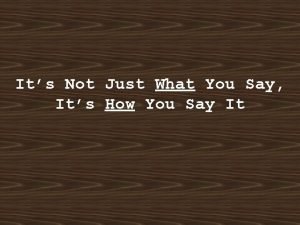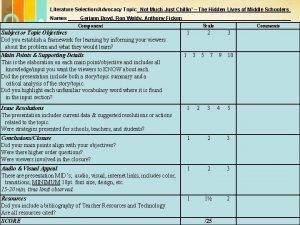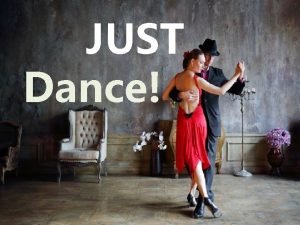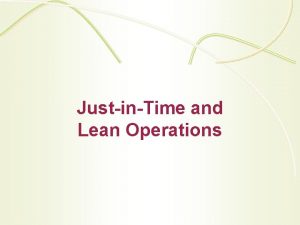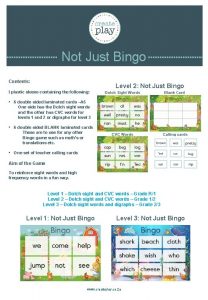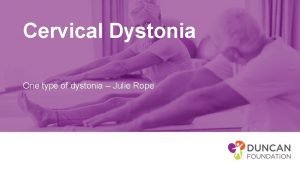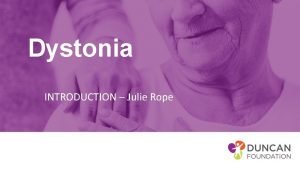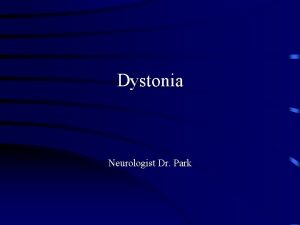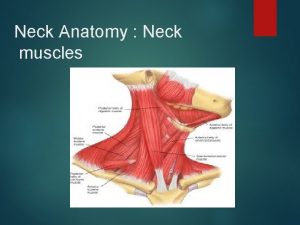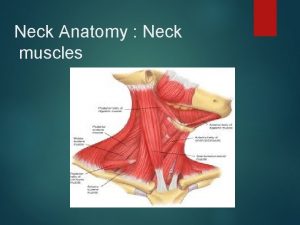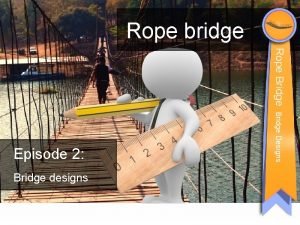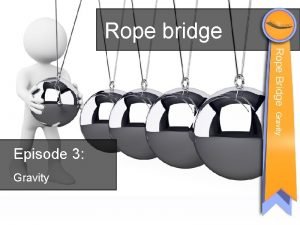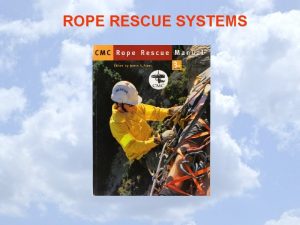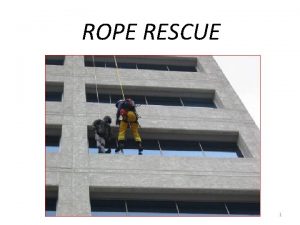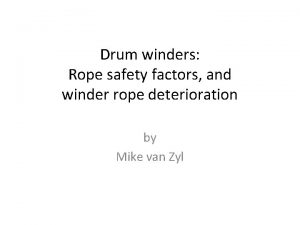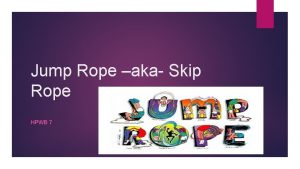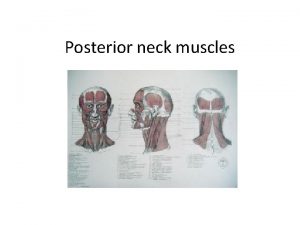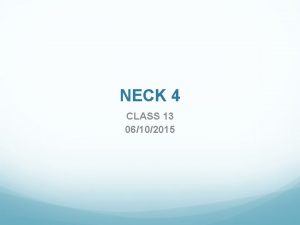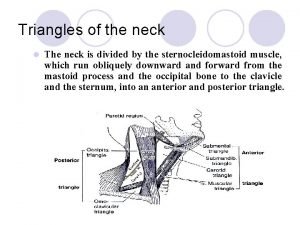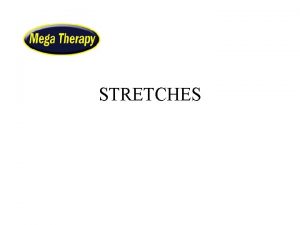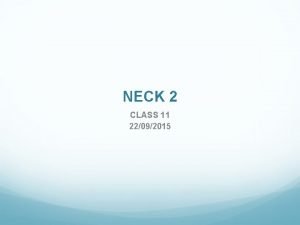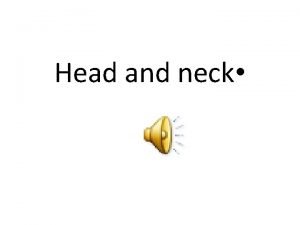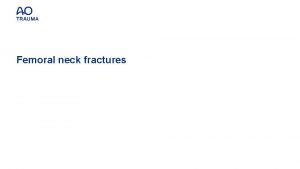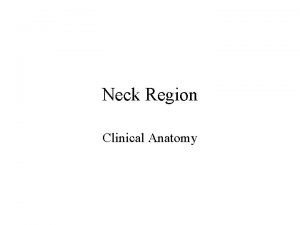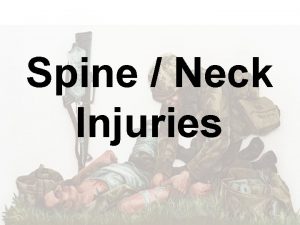Dystonia not just the neck Julie Rope Not

































- Slides: 33

Dystonia – not just the neck Julie Rope

Not just the neck… • Different – cause/pathway/presentation • Combinations • May be task specific ie when writing but not other dexterity • Clinical history and neuro exam to help guide diagnosis/classification

Types • Blepharospasm • • • eye muscle, squinting (1 but usu. 2), affect vision, inc. sunlight, wind, stress, running/ decr. Humming singing, pinching neck F>M, 50 y + Artificial tears don’t help Botox to the orbicularis Oculi • Oromandibular dystonia • Jaw musc can’t open, clench, grinding • Pain, hard to eat, drink, speak • ? after dental procedure/trauma • Meige syndrome • facial mus (pharynx, throat, speech swallow) • Blepharospasm + Oromandibular dystonia • Inc. stress/ decr. Sing/hum

Types • Spasmodic dysphoria • • Invol. movements of voice box – Add/Abduction Can’t talk loud, irregular choppy speech, silent at times CAN scream, laugh without spasm, whisper and sing high pitched Does affect airflow Can have mixed F>M, 30 – 50 yrs onset Diag. – local anaesthetic to vocal cord – speech normal Botox – alternating one cord at a time

Types • Writers cramp • Focal – dominant hand, ache after a page – then onset earlier, may develop into complex and associated with CD/ oromandibular • Simple – writing only Complex – all dexterity tasks (buttons, utensils) • Usu. Person swaps hand – 50% dev in non dom also • Occupational dystonia • Job– musician – spasms/feel heavy and pain • Rest and Botox but then weakness and in coordination – balance but hard if $

Types • Generalised dystonia • Inherited, rare, local then progresses limbs, torso and facial, may occur at rest • Stop during sleep and reduces with rest generally • Earlier onset of focal more likely to progress to general • If dopamine responsive – levodopa, baclofen, intrathecal pump, surgery BG, DBS • Paroxysmal dystonia - Episodic, inherited • Kinesogenic, nonkinesogenic, exertion induced and hypnogenic – during sleep

Treatments • Medical management of the pain and activity • Focal – botox • Generalised – levo dopa, colinergic • TMS – external neuro stim – retraining brain plasticity • DBS – not a cure, life changing for the right person with the right team and right settings in the right place, not a quick fix, a process

Botox • Botulinum toxin injections for dystonia Botulinum toxin injections (Botox®, Xeomin®, Myobloc®, Dysport®) • Temporary dennervation • No signal to contract – loose/slackened • Which muscle? – feel – muscle EMG to guide • What dose? Depends… • 3 days begin to see effect – ¾ weeks max effect • 10 weeks repeat dose • May develop resistance antibodies • In conjunction with physiotherapy for antagonist muscle groups and progress midline orientation gait pattern upper limb function - Splinting - DMO • Serial Casting – splint applied/casted/remove 5 -7 days later and reapplied continue until reduction in joint range is achieved

Focal hand dystonia • Important to assess scapular stabilisation • Somatosensory impairment – proprio, putty, coordination exercises • Kinematics – angle changes of the platform writing on changes pressure and angles and improves symptom • Constraint – 4 weeks • Large hand writing cursive • Outcome measures – • time to onset, time 10 consecutive looped L’s • Writers Cramp Rating Scale – movement and speed • Arm Dystonia Disability Scale – quantify disability

Treatment aims – address intrinsic biomechanical issues and explore ways of creating new “neurological pathways” e. g. for playing the piano. extensive myofascial work (releasing “trigger points” in tight muscles) of the upper limbs and shoulder girdles and acupuncture treatments together with postural correction work at the piano. Attention to general health and fitness included institution of a cardiovascular exercise programme (swimming and cycling). exploring new ways of playing that might use different neurological pathways, (rather than the old ones which had become “smudged”). Altering the height of the piano stool (sometimes quite drastically- the position of the music on the music stand- posture at the piano – sometimes in quite extreme ways, if only to demonstrate that using new ways of playing could bypass many of the dystonic movements Altering sensory input: Playing with rubber gloves - Covering the ivories of the Steinway with Elastoplast tape- Rubbing the finger tips on a rough surface to “sensitise” them before playing - Playing with white noise through headphones - Using mirrors Sensory retraining away from the piano to “redefine” the sensori-motor areas of the brain for each finger eg learning Braille, blind fingering of dominoes and other objects Motor retraining using splints a Type of “constraint induced therapy” where the finger that compensates for the dystonic finger is splinted prior to short periods of practice), and even a short period of cast immobilisation modifying technique to create a new way of playing (ie using new neurological pathways and patterns

Dopamine Responsive Dystonia • involuntary muscle contractions, tremors, and other uncontrolled movements (dystonia). from mild to severe but typically improve with sustained use of a L-Dopa. • usually appear during childhood, most commonly around age 6. The first signs typically the development of inward- and upward-turning feet (clubfeet) and dystonia in the lower limbs. The dystonia spreads to the upper limbs over time; • Beginning in adolescence, the whole body is typically involved. • Affected individuals may have unusual limb positioning and a lack of coordination when walking or running. Some people with this condition have sleep problems or episodes of depression more frequently than would normally be expected. • Over time, - parkinsonism. including unusually slow movement (bradykinesia), muscle rigidity, tremors, and an inability to hold the body upright and balanced (postural instability). • The movement difficulties usually worsen with age but stabilize around age 30. • A characteristic feature of dopa-responsive dystonia is worsening of movement problems later in the day and an improvement of symptoms in the morning, after sleep (diurnal fluctuation). • Rarely, adult-onset cases, parkinsonism usually develops before dystonia, and movement problems are slow to worsen and do not show diurnal fluctuations.

Geste Antagonsite • Indep find, temporary effect, location and pressure differ • most preferred an ipsilateral light touch on the lower face, chin, or posterior neck - forceful ipsilateral touch, light or forceful contralateral touch, or bilateral manoeuvres • "supports emerging theories that dystonia is a disorder of sensorimotor integration. “ • sensory trick "produces its effect by inhibiting the over-activity of the motor cortex. “

DMO • embraces the neurophysiological approach, where proximal key points of control, reciprocal inhibition and stimulation of the sensorimotor system are used. • biomechanical approach of maintaining muscle length, strength and joint alignment. To trial effect where you put your hands to have an effect • omotrain -in theory • a lumbar belt to load the pelvis then to mimic the rotational panelling use an elastic bandage –pull diagonally up toward the hip to encourage external rotation. • K taping to facilitate sensory feedback effect

Imbalance Vestibular Visual and Somatosensory input from receptors in muscles, joints and the skin Stability of vision, posture and perceived body orientation. Dystonia - somatosensory input and potentially vision Cervical pathology - alter cervical muscle function and joint mechanics. The expected and actual afferent inputs do not match. This can lead to secondary disturbances in the Vestibular and visual systems due to plastic changes in the CNS. May present as dizziness • (Brandt 2001)

Imbalance • Falls • Community complex environment • Inactivity

Exercise!!! let pain be your indicator to modify an exercise. No pain no gain – not for you! Sensible aerobic exercise - cardiovascular system and maintaining optimal health. It is ok to feel an ache of opposing muscles being worked & normal to feel muscle ache when working a new muscle group.

Neuro pilates A form of dynamic stabilisation retraining that reconditions the body from the central core to prevent the recurrence of and treat a range of postural, Msk and neurological conditions. • both avoid the area of Dystonia and go right into it. • work around an ailment…in the effort to make the 99% of the body that is healthy even healthier so it can support the 1% that is struggling. • Pilates classes from an instructor with neurological experience. • four people per class. -specialist attention to every person at the class.

Massage? debatable. . • Cutaneous stimulation of the dystonic muscles reinforces the pathologic activity • Mixed results • Acupressure the most economical effective pain relief with measureable low risk • Traction shown to help • Direct pressure over SCM – ineffective and may injury

Being healthy • Healthy people- become more active, energetic and healthier versions of themselves. • Even with dystonia it is important to reach optimal health, becoming proactive about general health. • Dystonia is sensitive to any kind of stress including fatigue - to managing your time to managing your dystonia – fight fatigue

Online resources • • www. dystoniasociety. com Dystonia Medical Research Foundation (DMRF) www. dystonia-foundation. org info@dystonia-foundation. org The Dystonia Society http: //www. dystonia. org. uk/ info@dystonia. org. uk National Spasmodic Dysphonia Association (NSDA) www. dysphonia. org nsda@dysphonia. org Benign Essential Blepharospasm Foundation (BEBRF) • http: //www. blepharospasm. org/ bebrf@sbcglobal. net • We. Move (Movement disorders) • http: //www. wemove. org

Measures • QUALITY OF LIFE • Cranio-cervical Dystonia Questionnaire (CDQ-24) and Short Form 36 (SF-36) • Disability • • Toronto Western Spasmodic Torticollis Rating Scale (TWSTRS) Functional Disability Questionnaire (FDQ). The FDQ is a 27 item scale to measures the impact of CD on daily functioning • RANGE OF MOVEMENT • ability to perform voluntary movements, with a cervical range of motion meter (CROM) [29]. The CROM is a frame that will be placed on the head with three separate inclinometers to measure AROM in the sagittal, coronal and horizontal planesthe psychometric properties of the CROM in patients with CD are unknown, in a healthy population the CROM is a reliable instrument to measure cervical ROM • PAIN • To determine the additional effects of PT on pain, patient are asked to rate their pain on a Numeric Rating Scale (NRS). • DEPRESSION • Beck’s Anxiety Index and Beck’s Depression Index • Severity • • • Tsui scale measures different aspects of abnormal posture and movements in CD patients Clinical Global Impressions-Severity of Illness Scale (CGI-S) and the Clinical Global Impression - Improvement scale (CGI-I ). ADDS – arm dystonia scale

References Bleton J-P, Spasmodic Torticololis. A physiotherapy handbook. 2014, Frison-Roche Cassidy A pathophysiology of idiopathic focal dystonia ACNR 2010 10 14 – 18 Chan, J. Brin, MF, Fahn, S: Idiopathic cervical dystonia: clinical characteristics. Movement disorders 1991; 6(2): 119 -26 Chronicles of a dystonia muse – https: //dystoniamuse. com/ Dashtipour K, Lew M. Handbook of Dystonia. 2007: 37 -154. Dystonia foundation organisation – living with dystonia physical therapy resource Joost van den Dool, et al; Effectiveness of a standardised physical therapy program: study design and protocol of a single blind randomised controlled trial. BMC Neurology December 2013, 13: 85 Mueller J, Wissel J Visual biofeedback treatment improves cervical dystonia Department of Neurology, Vivantes Hospital Berlin Spandau, Academic teaching Hospital of the Charité, Berlin Ostrem Jill L. , MD Diagnostic criteria for cervical dystonia: Can botulinum neurotoxin manage, as well as, cure the problem? Professor of Neurology UCSF Department of Neurology Movement Disorder and Neuromodulation Center Bachmann Strauss Dystonia and Parkinson’s Disease Center of Excellence Dec 2015 Thong, D, Mayank P and Frei K. Living Well with Dystonia. A patient guide. 2010. National Institute of Neurological Disorders and Stroke Wolfgang H. Jost et al: Rating scales for cervical dystonia: a critical evaluation of tools for outcome assessment of botulinum toxin therapy, J Neural Transm. 2013 Mar; 120(3): 487– 496.

THANK YOU Julie Rope on behalf of the Duncan Foundation










 Athetosis
Athetosis Psychogenic dystonia
Psychogenic dystonia What does dystonia look like?
What does dystonia look like? Post traumatic cervical dystonia
Post traumatic cervical dystonia Kode icd 10 gout arthritis
Kode icd 10 gout arthritis Dystonia treatment
Dystonia treatment Schizophrenia
Schizophrenia Acute dystonia
Acute dystonia Small just
Small just Which two characters are detained by the watchmen
Which two characters are detained by the watchmen Not genuine, not true, not valid
Not genuine, not true, not valid Not just anyone
Not just anyone It's not what you say it's how you say it
It's not what you say it's how you say it Not much just chillin summary
Not much just chillin summary Not just dance
Not just dance Its not just anymore
Its not just anymore What is jit
What is jit Just bingo
Just bingo Một số thể thơ truyền thống
Một số thể thơ truyền thống Các loại đột biến cấu trúc nhiễm sắc thể
Các loại đột biến cấu trúc nhiễm sắc thể Thế nào là hệ số cao nhất
Thế nào là hệ số cao nhất Ng-html
Ng-html Thiếu nhi thế giới liên hoan
Thiếu nhi thế giới liên hoan đặc điểm cơ thể của người tối cổ
đặc điểm cơ thể của người tối cổ điện thế nghỉ
điện thế nghỉ Các châu lục và đại dương trên thế giới
Các châu lục và đại dương trên thế giới Tư thế worms-breton
Tư thế worms-breton Sơ đồ cơ thể người
Sơ đồ cơ thể người Thẻ vin
Thẻ vin Số nguyên tố là gì
Số nguyên tố là gì Cái miệng nó xinh thế
Cái miệng nó xinh thế Cách giải mật thư tọa độ
Cách giải mật thư tọa độ Các châu lục và đại dương trên thế giới
Các châu lục và đại dương trên thế giới Bổ thể
Bổ thể
